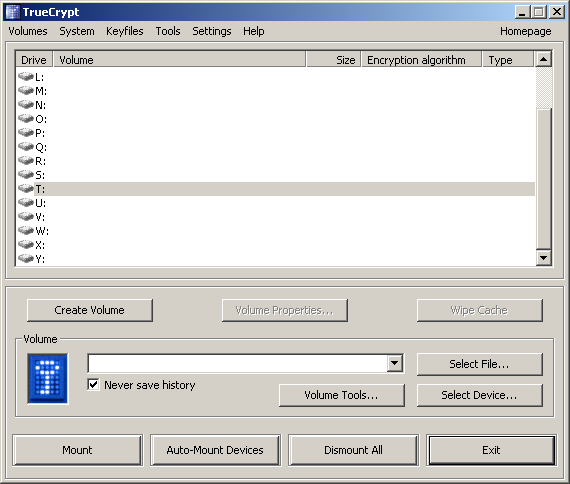TrueCrypt 6.0 veröffentlicht (Benchmark)
Am vergangenen Freitag wurde eine neue Version des beliebten Open-Source-Verschlüsselungstools TrueCrypt veröffentlicht. Die Version 6.0 beherbergt dabei zahlreiche Features, die nicht nur die Datensicherheit sondern insbesondere auch die Performance verbessern sollen.
Zu den größten Neuerungen gehört ohne Frage die neu hinzu gekommene Multi-Core-Unterstützung, welche dem Programm auf Dual-/Mehrkern- oder Multi-Prozessor-Systemen zu einer deutlich verbesserten Performance bei der Ver- und Entschlüsselung der Daten verhilft. Bislang liefen jene Prozesse lediglich auf einem Prozessorkern. Zudem ist es nun möglich, versteckte Betriebssystem-Volumes zu erstellen. Läuft das System in einem versteckten Container, werden aus Sicherheitsgründen sämtliche nicht-verschlüsselte oder nicht-versteckte Volumes auf read-only gesetzt, sodass eine Datenveränderung auch tatsächlich nur in dem versteckten Volume möglich ist.
Anders als bei Windows XP bietet TrueCrypt 6.0 unter Windows Vista oder Server 2008 die Funktion der kompletten System-Verschlüsselung, wenn zusätzliche erweiterte Partitionen und logische Laufwerke auf der Festplatte vorhanden sind. Ein neues Volume-Format soll vor allem die Zuverlässigkeit und Erweiterbarkeit steigern. Dazu wurde unter anderem der Volume-Header auf 128 KB vergrößert, um zusätzliche Daten für z.B. neue Features in kommenden Versionen ablegen zu können. Desweiteren wurde ein neuer Embedded-Backup-Header eingeführt, welcher am Ende jedes TrueCrypt-Volumes gespeichert wird und das Risiko eines defekten Volume-Headers deutlich minimieren soll.
Benutzer von Linux- oder Mac-OS-X-Systemen sind mit der Version 6.0 nun ebenfalls in der Lage, versteckte Volumes zu erstellen. Unter Linux arbeitet TrueCrypt ab sofort im internen Kryptografie-Dienst des Kernels. Dies gilt jedoch lediglich für Volumes, welche mit dem XTS-Modus verschlüsselt wurden. Für Volumes, die mit LRW oder CBC arbeiten, ist weiterhin eine Installation und Nutzung des FUSE-Treibers erforderlich – gleiches gilt auch für ältere Kernel-Versionen ohne XTS-Unterstützung.
Wie schön zu erkennen ist, skaliert die Performance fast linear mit der Anzahl der Prozessorkerne. Das System mit zwei Intel Xeon E5320 Quad-Core-Prozessoren (8 x 2,33 GHz) erreicht eine fast viermal so hohe Performance gegenüber dem mit einem Core 2 Duo T7700 Prozessor (2 x 2,40 GHz) bestückten System. Sogar bei der Kombination der drei Algorithmen AES, Serpent und Twofish werden mit modernen Dual- oder Quad-Core-Systemen durchaus brauchbare Geschwindigkeiten erzielt. Getestet wurde mit einem 100 MByte großen Puffer.
Um eine bessere Vergleichsmöglichkeit zu bieten, möchten wir allen Benutzern von ComputerBase anbieten, unter Berücksichtung der Einstellung eines 100 MB großen Puffers und des Postens eines entsprechenden Screenshots die erreichten Werte in das Diagramm aufnehmen zu lassen.
Downloads
-
TrueCrypt Download [Archiviert]
3,7 SterneTrueCrypt ist ein kostenloses Open-Source-Programm zum Verschlüsseln wichtiger Daten.
- Version 7.1a


